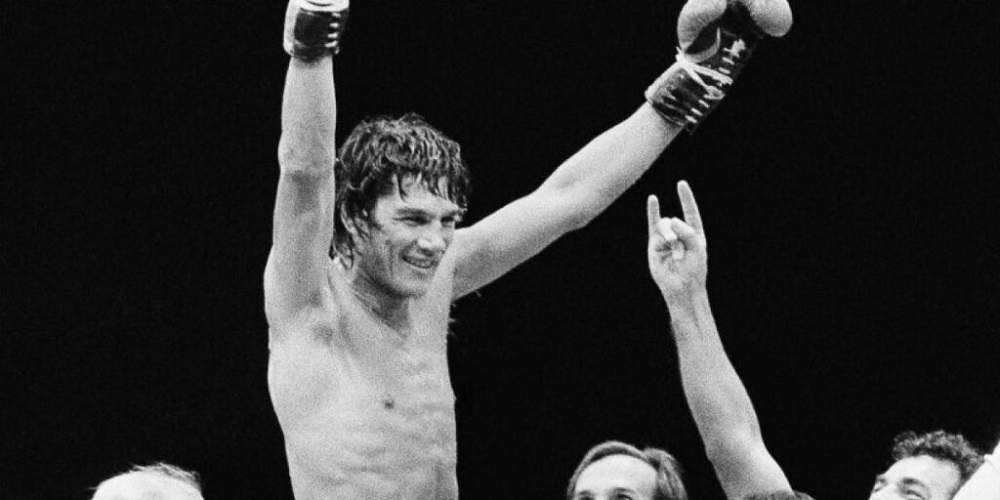A spectacular and violent death crowned a life always lived over the top: this was the fate that awaited Carlos Monzon, one of the strongest middleweights to ever show his prowess in the ring. On January 8, 1995, his car, speeding near Santa Rosa de Calchines in his native Argentina, overturned multiple times, killing him instantly. This man, icy in the ring but uncontrollable outside it, met a dramatic end. On the anniversary of his birth on August 7, 1942, we recount some milestones of the Escopeta’s sports history, the authentic dominator of the middleweight division in the 1970s.
A Man from Nowhere
When Carlos Monzon arrived in Rome in 1970 to face our great champion Nino Benvenuti, holder of the WBC and WBA middleweight titles, he was an unknown to the insiders. The Argentine had already fought an impressive 79 fights but had never crossed the borders of South America, competing almost exclusively in his homeland with a few sporadic appearances in Brazil. Those who had seen him in the early part of his career predicted an easy victory for Nino: Monzon, during his early bouts, had to contend with symptoms of an annoying anemia that quickly drained his energy. However, no one had ever managed to knock him out, showcasing a character and tenacity that would later define his long reign as champion.
Benvenuti Falls: The Era of the Invincible Man Begins
We have already recounted the epic fight in Rome between Monzon and Benvenuti, which granted the Argentine the champion status (–> The Fall of Nino Benvenuti after 12 Intense Rounds: The Era of Monzon Begins!). From that moment, Escopeta embarked on a simply perfect sporting path, with 14 consecutive successful defenses, the first of which saw him overwhelm Benvenuti in just three rounds, as the Italian was already in decline. Our Nino, tossed around the ring at Stade Louis II in Monaco, was saved after two knockdowns by the throwing of the towel. Thus began a reign that would last almost seven years without interruptions or missteps: the elegant boxing of the dethroned Italian champion was replaced by the essential and ruthless boxing of the fierce South American.
A Mighty Physique Exploited to the Fullest
Monzon’s style did not appeal to everyone, so much so that Escopeta struggled to be recognized among the greatest of all time by the critics of the era, unimpressed by his seemingly lazy but tremendously effective way of fighting. A formidable weapon that aided him in his successes was the gigantic physique granted by nature: with his slender legs, Monzon towered over most of his opponents in height and reach, wisely exploiting this gift depending on who he faced. Smaller rivals like Emile Griffith and Jose Napoles were demolished “from afar,” while physically powerful boxers like Gratien Tonna were crushed in close combat. Making weight was not easy for the Argentine: before the rematch against Griffith, he was forced to run three miles, later paying for the effort in the ring and winning by a narrow margin.
The Last Great Effort and the Wise Retirement
It so happened that the last opponent of Monzon’s career was also the most terrible: Rodrigo Valdez, who arrived at the world title shot on the heels of 27 consecutive victories, was a force of nature. However, just five days before the world championship, the Colombian learned of his brother’s violent death, but the contracts had been signed, and despite the emotional upheaval and six attempts to make weight, he still climbed into the ring. Monzon took advantage of his opponent’s poor condition, knocking him down in the fourteenth round and winning on points. The real Valdes showed up in the rematch, attacking the Argentine with unprecedented ferocity, knocking him down in the second round and giving him a hard time. But Monzon knew how to suffer: he weathered the storm, opened a nasty cut on his rival’s face, and gradually recovered on points, confirming his championship for the last time. At the end of the fight, he simply said: “I think I’ve shown everyone that I’m one of the greatest. But now it’s over. Without a doubt. From tonight, I will start living like a human being.”
A Turbulent Life to the End
The wisdom that led him to retire before losing his athletic qualities and the relentless coldness he showed in the ring – the same coldness that saw him enter the ring after learning of his brother’s death, win by KO, and then say, “Now we can go to the funeral” – did not accompany him in everyday life. Monzon was swept up by passions in a whirlwind of romantic relationships and brutal acts of violence, both against his partners and strangers, especially journalists and photographers “guilty” of invading his privacy. Such an inclination towards violence could only degenerate, and indeed, the Uruguayan model Alicia Muñiz, Monzon’s third wife and mother of his fifth child, did not escape with bruises and contusions like the others: she was strangled and thrown from the second floor, finding death. The 11-year prison sentence did not quell an unsettled soul, and on his way back to prison after a day out, he performed the last fatal reckless act.
Despite all the excesses and brutality committed, the Argentine people, who always held their breath during his fights, never turned their backs on him. A packed crowd at his funeral chanted “Dale campeón,” the last tribute to a controversial champion, impeccable in sport but reprehensible in life, whose name will nonetheless forever be etched in the history books of boxing.

